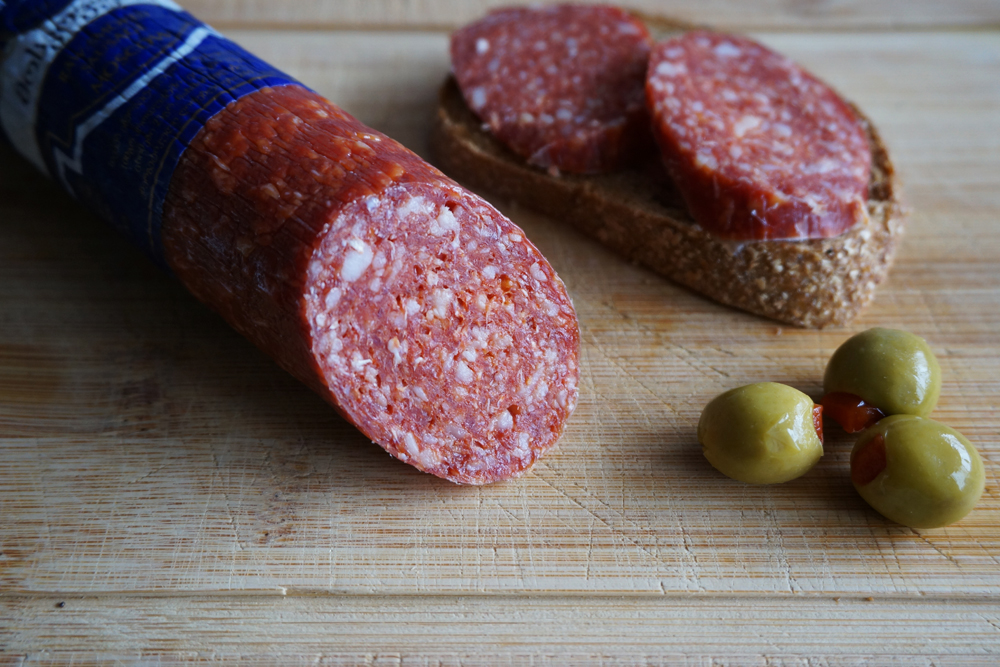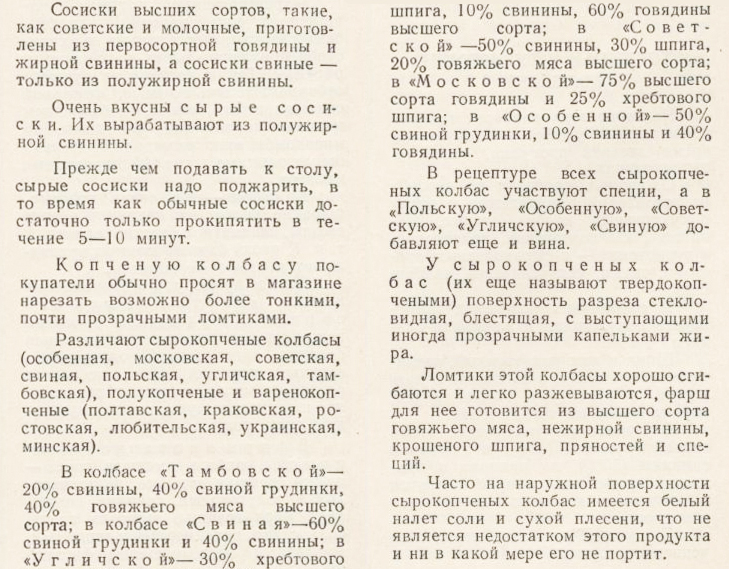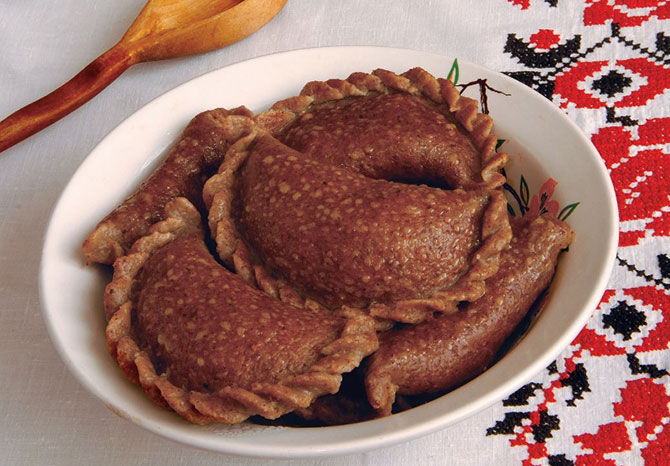Soviet social status, determined by sausage

Salami, bologna and sausages really did become national dishes.
Anna KharzeevaThis piece is part of the Soviet Diet Cookbook, a blog about a modern Russian girl cooking Soviet food. To read more of the series, click here.
Kolbasa, which can be translated as either salami or bologna, holds a special place in the Soviet and Russian diet. “The history of kolbasa is the history of the country,” said Granny’s friend, Galina Vassilyevna, explaining that before the revolution, kolbasa was the food of the poor people and after the revolution, poor people could barely afford it.
There is an almost unlimited number of varieties of kolbasa in Russian — smoked or boiled, thin, fat, with various flavors and spices. And they differ in price as much as they differ in taste — from the cheap bologna (called “doktorskaya” in Russian) to expensive smoked salamis with tiny spots of fat. Every big Russian supermarket has a long case of kolbasa where shopper can buy their favorite variety.
As a kid, I used to love doktorskaya — a piece of white bread with a little bit of butter and a couple of thick slices of this kolbasa were heavenly. There were rumors that doktorskaya was made of toilet paper, but it didn’t stop the kids from eating it. I also used to love “kolbasnyi” cheese, which was just cheese in a long salami-like slab, which is probably how it got its name. According to Granny, doktorskaya got its name because it was considered to be a healthier type of kolbasa.
According to the Book, “such boiled salami as doktorskaya, otdel’naya, osobaya... are good, are of quite good quality and tasty. Sausages and sardelki are also a type of kolbasa. They are becoming more and more popular and have become a national dish.”
Granny says that the boiled types of kolbasa, called chaynaya (tea) and otdel’naya (separate), were the cheapest varieties, and the quality was so low that people would boil and fry them before eating, as otherwise they were inedible. Even the Book notes that boiled salami are only of “quite good” quality.
 The recipe from the Soviet Cook Book, page 58
The recipe from the Soviet Cook Book, page 58
Salami, bologna and sausages really did become national dishes, but in the 1960s, even these beloved processed meats disappeared from the shops, along with most other types of food. Galina Vassilyevna remembers going to a satirical performance in which a song was performed that went: “even otdelnye (separate or special) shops don’t have otdelnaya kolbasa.” The song didn’t pass censorship and had to be turned into “even otdelnye shops have plenty of different kolbasa,” which had as much satire and rhyme to it as doktorskaya has health benefits.
Galina Vassilyevna also remembers that she and her husband used to buy honey from an old lady in a village outside of Moscow. They asked her if there was anything she wanted from Moscow. “Kolbasa” was the answer, and when they brought her two big loaves of it, she hugged them as if they were babies and sighed: “now I can treat my grandchildren to kolbasa!”
Children were certainly not the only devoted lovers of kolbasa – in Moscow, the type of kolbasa that was on your table very much showed what position you held in society. Granny says that there were special shops where you could buy all sorts of kolbasa, but only people at the top of the ladder could get ahold of it. “At that time people were trying to get jobs in the Party organizations. A good job was called ‘closer to kolbasa.’ People would say: ‘what’s the new job you got? Have you managed to get closer to kolbasa?”
The most famous processed meat factory in the Soviet Union was named after no one less than Mikoyan — the author of the Book of Healthy and Tasty Food — himself. Granny’s friend Valentina Mikhaylovna remembers standing in line at a Mikoyan factory shop to get some liver salami called “yaichnaya” (made of eggs). One of the women in the line asked everyone if they knew where it got the name, and informed people that it was because it had bull’s testicles in it. Valentina Mikhaylovna wasn’t put off by that notion and stayed in the line, which had immediately became a bit shorter. Kolbasa was always store-bought, as making it in a communal flat was impossible. Guessing the ingredients was also a sort of a national sport.
 The recipe from the Soviet Cook Book, page 59
The recipe from the Soviet Cook Book, page 59
The Book notes that there were more than 100 varieties of salami produced in the Soviet Union, adding: “The very look and spicy, delicate aroma of salami, smoked meats, ham, pates and sausages arises appetite.”
Honestly, kolbasa hasn’t arise appetite in me for a while, and writing this blog was the only reason I have had in years to buy some for myself. My husband enjoys it, though, and Granny has commented that maybe he should eat less salami. He might change his mind if I took his diet down the social ladder a few steps and bought him “healthy” doktorskaya instead!
The very sight and spicy, delicate aroma of sausages, smoked ham, pâtés and sausages arises appetite. There are more than 100 different varieties of salamis and sausages for sale. In the process of manufacturing premium cooked sausages, we use the best of the choicest beef, lean pork, bacon (hard and semi-hard), beef and pork tongues, sometimes eggs, then pepper, nutmeg or cardamom, and sometimes pistachios.
All rights reserved by Rossiyskaya Gazeta.
Subscribe
to our newsletter!
Get the week's best stories straight to your inbox


